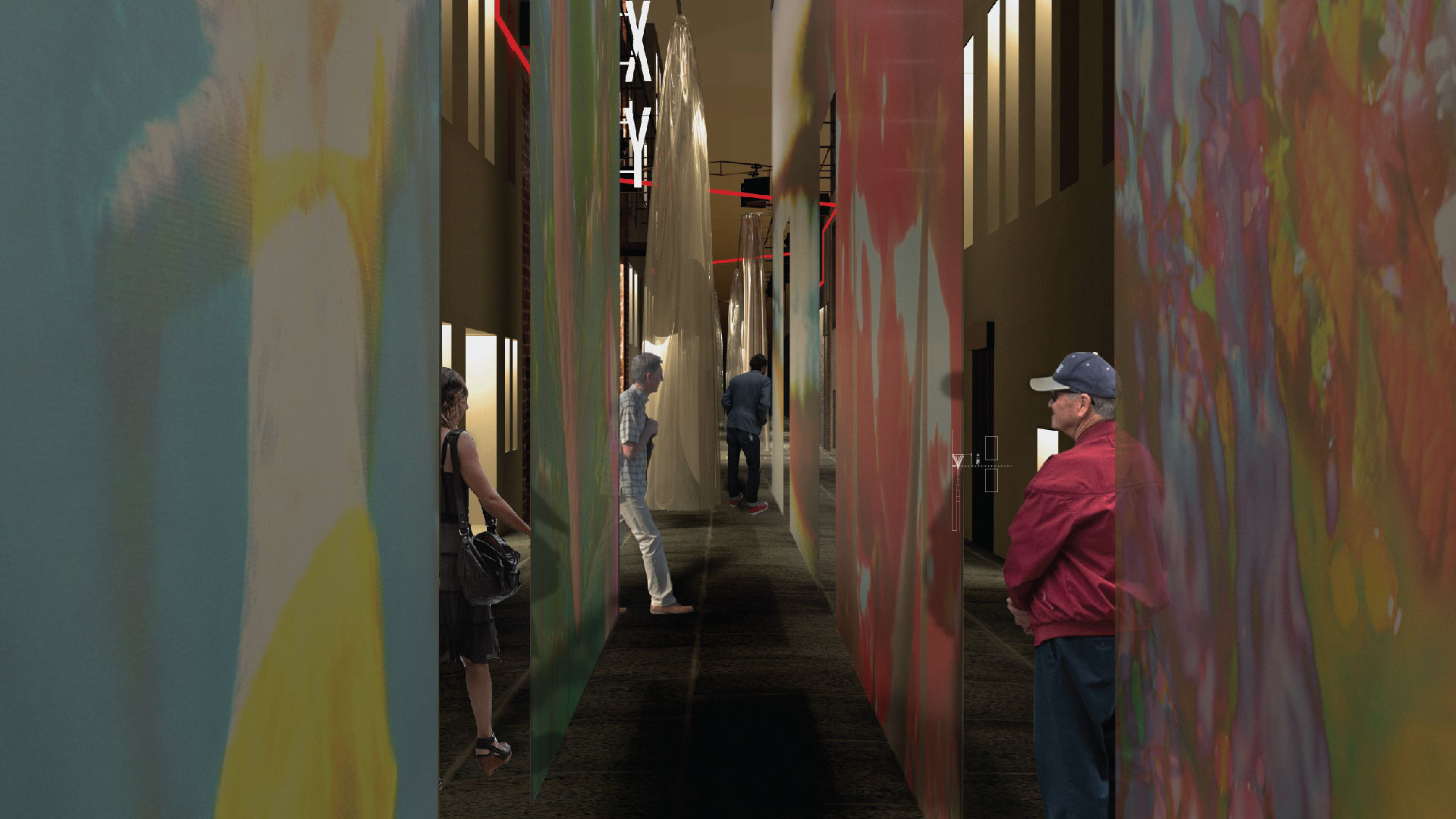

Shifting the PERFORMANCE-AUDIENCE relationship of the public
The projective cinematic experience establishes an intersubjective relationship between performance and audience. The inscriptive nature of the street establishes a seemingly fixed relationship between its architecture and pedestrians. Both relationships are inherent in our subconscious, existing alongside space, time and duration. What occurs when we then become conscious of these links, and present them at the forefront, through a spatial confrontation? What if the intervention is physical, sensory, moving?
Using the site of Fort Lane – a space which still reverberates with the cinematic ghosts of Auckland’s earliest theatre – I propose the performative installation We Are Not Unseen Spectators, which runs along the full 115 metres of what is presently an urban thoroughfare. With the street as the proscenium backdrop to a single continuous film, I create a cyclical interchange in the role of pedestrians.
There is a distinct difference between the relationship of architecture and its pedestrians in a street, and that between performance and audience in a cinema. Both inherently work with space, time and duration; but whilst one is fixed, the other occurs through time. My design concept revolves around wanting to present these elements at the forefront – through a physical, sensory and moving spatial confrontation. I have designed a performative intervention, which uses the street as the stage, so that pedestrians become a viewer, but are also involved within the performance itself, blurring that traditional proscenium or ‘fourth wall’ boundary.
We Are Not Unseen Spectators features a large curtain along the entire length of Fort Lane, acting as a screen to exhibit a collection of projected moving image art. The design incorporates elements of time and duration: the curtain is retracted back during the day time, and extended out only at night, starting at sunset. It is meant to be a slow cinematic transition, inviting pedestrians to stay and watch, bringing many experiential opportunities in the design narrative – will the pedestrian remain still and be embraced by the curtain, or they walk with the shifting curtain as each artwork begins to project itself onto a new section of screen? This event is viewed through bodily movement, crossing the opening thresholds and changing one’s pace from walking to standing still. The curtain makes the performance available to the audience, exploring the idea that although the projections are a performance to be spectated, the simultaneous circulation of the public is also a performance in itself. This unusual cinematic device forces the pedestrian to simply be more than just unseen spectators at an event; instead their interactions become just as, if not more important to the performance.


